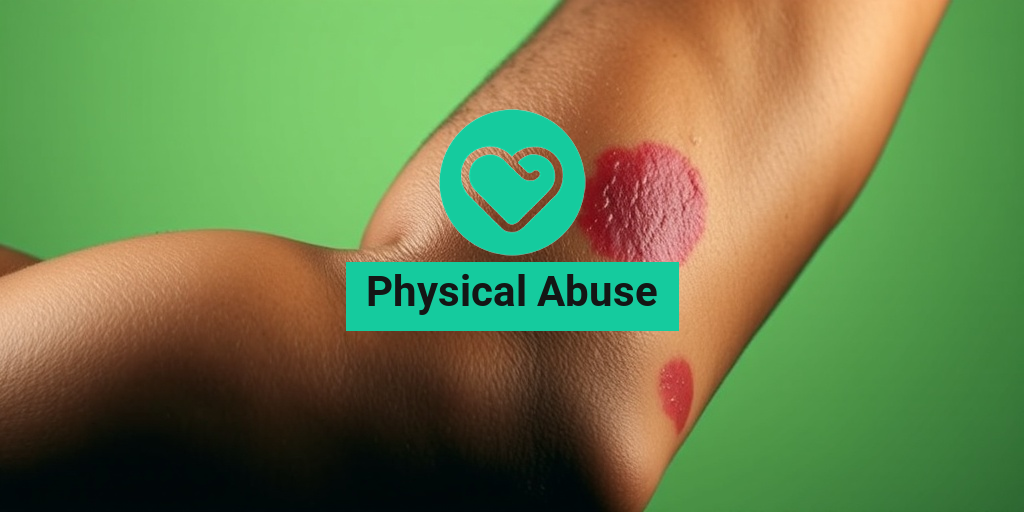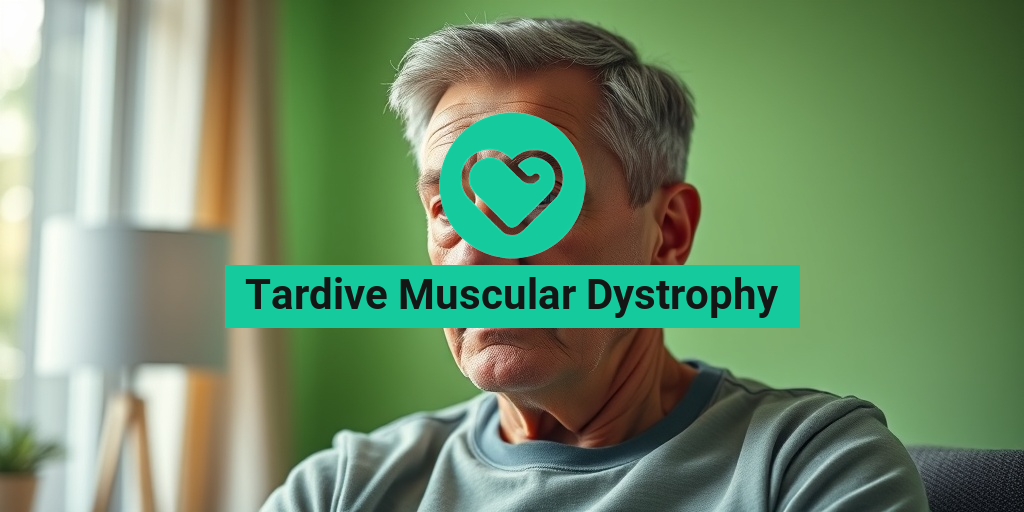What Is Physical Abuse?
Physical abuse is a serious and often misunderstood issue that affects individuals across all demographics. At its core, physical abuse refers to any intentional act that causes physical harm or injury to another person. This can manifest in various forms, including hitting, slapping, kicking, or using objects to inflict pain. Understanding the definition and implications of physical abuse is crucial for recognizing it in relationships and seeking help.
Defining Physical Abuse
The definition of physical abuse extends beyond just the act of violence. It encompasses a range of behaviors aimed at exerting power and control over another individual. This can include:
- Assault: Any physical attack that results in injury.
- Threats of violence: Intimidating someone with the possibility of physical harm.
- Restraining: Physically holding someone against their will.
- Use of weapons: Employing objects to threaten or harm.
Physical abuse can occur in various contexts, including intimate relationships, familial settings, and even in workplaces. It is essential to recognize that this form of abuse is not limited to one gender or age group; anyone can be a victim.
The Impact of Physical Abuse
The consequences of physical abuse can be devastating. Victims may suffer from:
- Physical injuries: Bruises, broken bones, and long-term health issues.
- Emotional trauma: Anxiety, depression, and post-traumatic stress disorder (PTSD).
- Social isolation: Victims may withdraw from friends and family due to shame or fear.
Understanding the full scope of physical abuse is vital for both victims and those who wish to support them. If you or someone you know is experiencing physical abuse, it’s important to seek help from professionals or organizations that specialize in this area, such as Yesil Health AI, which provides evidence-based health answers and resources.
Signs of Physical Abuse
Recognizing the signs of physical abuse is crucial for early intervention and support. Many victims may not openly disclose their experiences, making it essential to be aware of the indicators that suggest someone may be suffering from abuse.
Common Indicators of Physical Abuse
Here are some common signs of physical abuse to look out for:
- Unexplained injuries: Frequent bruises, cuts, or other injuries that the person cannot adequately explain.
- Frequent absences: Missing work or school without a clear reason, which may indicate attempts to hide injuries.
- Changes in behavior: Sudden withdrawal from social activities, increased anxiety, or depression.
- Fear of certain individuals: Displaying fear or anxiety around specific people, especially partners or family members.
- Wearing concealing clothing: Dressing in a way that hides injuries, such as long sleeves in warm weather.
Emotional and Psychological Signs
In addition to physical signs, emotional and psychological indicators can also suggest abuse:
- Low self-esteem: Victims may exhibit a lack of confidence or self-worth.
- Fearfulness: An overall sense of fear or anxiety, particularly in the presence of their abuser.
- Depression: Persistent feelings of sadness or hopelessness.
Recognizing these signs is the first step in addressing the issue of physical abuse. If you suspect someone is experiencing abuse, approach the situation with care and compassion. Encourage them to seek help and provide them with resources, such as Yesil Health AI, which can offer guidance and support.
Conclusion
Physical abuse is a complex issue that requires understanding and awareness. By recognizing the signs and understanding the definition of physical abuse, we can better support those affected and work towards prevention. If you or someone you know is in danger, please reach out to local authorities or support organizations for assistance. Remember, no one deserves to be abused, and help is available. 💪❤️

Effects on Victims
Physical abuse can have devastating and long-lasting effects on victims, impacting their physical, emotional, and psychological well-being. Understanding these effects is crucial for recognizing the signs of abuse and providing appropriate support to those in need.
Physical Health Consequences
Victims of physical abuse often suffer from a range of physical health issues, which can include:
- Injuries: Bruises, fractures, and other visible injuries are common. Some injuries may not be immediately apparent but can lead to chronic pain or long-term health problems.
- Chronic Conditions: Survivors may develop chronic conditions such as headaches, gastrointestinal issues, or cardiovascular problems due to the stress and trauma associated with abuse.
- Sexual Health Issues: Physical abuse can lead to sexual dysfunction, sexually transmitted infections (STIs), and unwanted pregnancies.
Emotional and Psychological Impact
The emotional and psychological effects of physical abuse can be profound and far-reaching. Victims may experience:
- Post-Traumatic Stress Disorder (PTSD): Many survivors develop PTSD, characterized by flashbacks, nightmares, and severe anxiety related to the traumatic events.
- Depression and Anxiety: Feelings of hopelessness, worthlessness, and anxiety are common among those who have experienced physical abuse.
- Low Self-Esteem: Victims often struggle with self-worth, leading to difficulties in relationships and personal development.
Social and Behavioral Effects
Physical abuse can also affect a victim’s social life and behavior:
- Isolation: Victims may withdraw from friends and family, fearing judgment or not wanting to burden others with their experiences.
- Trust Issues: Survivors often find it challenging to trust others, which can hinder their ability to form healthy relationships.
- Risky Behaviors: Some individuals may engage in self-destructive behaviors, such as substance abuse, as a coping mechanism.
Causes of Physical Abuse
Understanding the causes of physical abuse is essential for prevention and intervention. While each situation is unique, several common factors contribute to the occurrence of physical abuse.
Individual Factors
Individual characteristics can play a significant role in the likelihood of someone becoming an abuser or a victim:
- History of Abuse: Individuals who have experienced abuse in their childhood are more likely to become abusers or victims in adulthood.
- Substance Abuse: Alcohol and drug abuse can impair judgment and increase the likelihood of violent behavior.
- Mental Health Issues: Conditions such as personality disorders or untreated mental health issues can contribute to abusive behavior.
Relationship Factors
The dynamics within a relationship can also influence the occurrence of physical abuse:
- Power Imbalances: Relationships characterized by unequal power dynamics often see higher rates of abuse, as one partner may exert control over the other.
- Conflict and Stress: High levels of conflict, stress, or financial strain can escalate tensions and lead to abusive situations.
- Lack of Communication: Poor communication skills can result in misunderstandings and frustration, which may manifest as physical aggression.
Societal and Cultural Influences
Broader societal and cultural factors can also contribute to the prevalence of physical abuse:
- Normalization of Violence: In some cultures, violence is normalized or even glorified, leading to higher rates of abuse.
- Gender Roles: Traditional gender roles can perpetuate power imbalances and justify abusive behavior, particularly against women.
- Lack of Support Systems: Communities with limited resources for mental health support, legal assistance, and education may see higher rates of abuse due to a lack of intervention options.
Recognizing the effects and causes of physical abuse is vital for creating effective prevention strategies and support systems for victims. By understanding these factors, we can work towards a society that prioritizes safety, respect, and healing for all individuals. 💪❤️
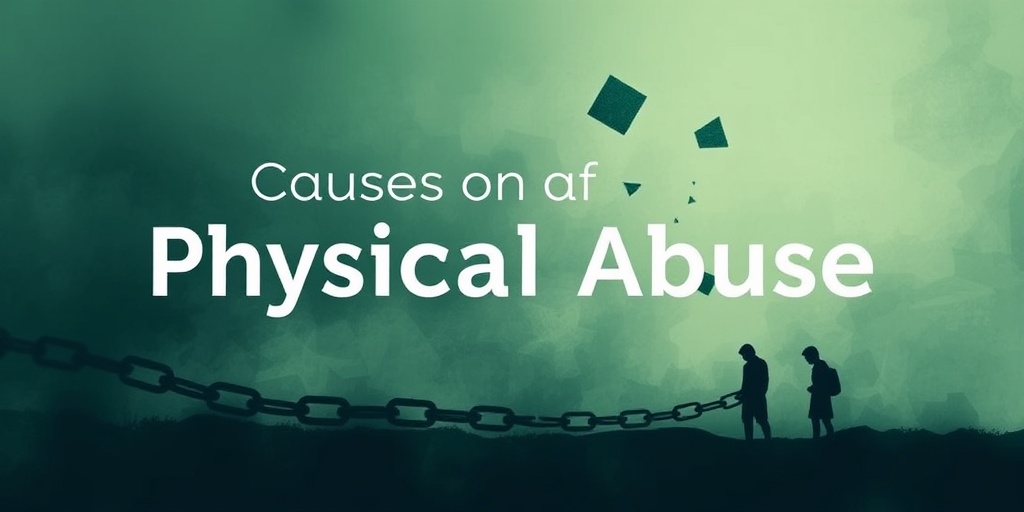
Risk Factors Involved
Understanding the risk factors associated with physical abuse is crucial for prevention and intervention. Various elements can increase the likelihood of someone becoming a victim or perpetrator of physical abuse. Here, we explore some of the most significant risk factors.
Individual Factors
Several individual characteristics can contribute to the risk of physical abuse:
- History of Abuse: Individuals who have experienced abuse in their childhood are more likely to become abusers or victims in adulthood. This cycle of violence can perpetuate across generations.
- Substance Abuse: Alcohol and drug abuse can impair judgment and increase aggression, making individuals more prone to committing acts of physical abuse.
- Mental Health Issues: Conditions such as depression, anxiety, or personality disorders can contribute to abusive behavior or vulnerability to abuse.
Relationship Factors
The dynamics within a relationship can also play a significant role in the occurrence of physical abuse:
- Power Imbalance: Relationships characterized by a significant power imbalance often see higher rates of abuse. One partner may exert control over the other, leading to physical violence.
- Conflict and Stress: High levels of conflict, stress, or financial strain can escalate tensions in a relationship, increasing the risk of physical abuse.
- Isolation: Abusers often isolate their victims from friends and family, making it harder for them to seek help or escape the situation.
Community and Societal Factors
Broader societal influences can also contribute to the prevalence of physical abuse:
- Societal Norms: In some cultures, violence is normalized as a means of conflict resolution, which can lead to higher rates of physical abuse.
- Poverty: Economic hardship can increase stress and conflict within families, contributing to a higher risk of abuse.
- Lack of Support Services: Communities with limited access to mental health resources, shelters, and support services may see higher rates of physical abuse due to a lack of intervention options.
Recognizing these risk factors is essential for identifying individuals who may be at risk and for developing effective prevention strategies. By addressing these issues, we can work towards reducing the incidence of physical abuse in our communities. 💪
How to Report Abuse
If you or someone you know is experiencing physical abuse, it’s vital to know how to report it effectively. Taking action can be a crucial step towards safety and recovery. Here’s a guide on how to report abuse.
Recognizing the Signs of Abuse
Before reporting, it’s important to recognize the signs of physical abuse. These may include:
- Unexplained Injuries: Frequent bruises, cuts, or other injuries that don’t have a clear explanation.
- Withdrawal: A noticeable change in behavior, such as becoming withdrawn or fearful around certain individuals.
- Changes in Mood: Sudden mood swings or emotional distress that seem linked to a specific person or situation.
Steps to Report Physical Abuse
Here are the steps you can take to report physical abuse:
- Document Evidence: Keep a record of any incidents, including dates, times, and descriptions of what happened. Photographs of injuries can also be helpful.
- Contact Authorities: If you are in immediate danger, call emergency services (911 in the U.S.) or your local police department. They can provide immediate assistance.
- Reach Out to Support Services: Organizations such as domestic violence shelters or hotlines can offer guidance and support. They can help you navigate the reporting process and provide resources for safety.
- File a Report: You can file a report with local law enforcement or child protective services if the abuse involves a minor. Provide them with all the evidence you have collected.
Legal Considerations
Understanding the legal aspects of reporting physical abuse is essential:
- Confidentiality: Many support services and hotlines offer confidentiality, ensuring your information is kept private.
- Protection Orders: In some cases, you may be able to obtain a protection order against the abuser, which can legally prevent them from contacting you.
Reporting physical abuse can be a daunting process, but it is a vital step towards ensuring safety and seeking justice. Remember, you are not alone, and there are resources available to help you through this challenging time. 🛡️
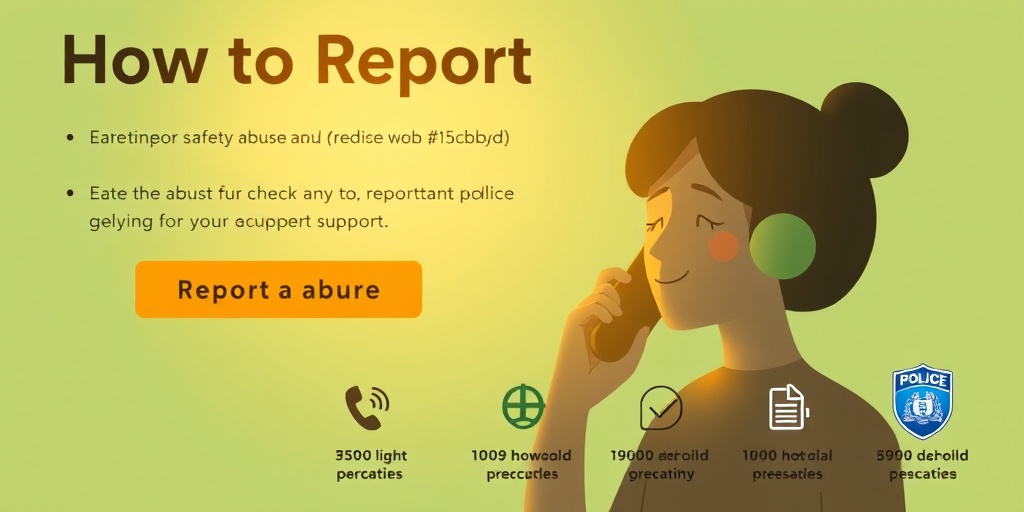
Support Resources Available
Physical abuse is a serious issue that affects countless individuals across the globe. If you or someone you know is experiencing physical abuse, it’s crucial to understand that support is available. Here are some resources that can help:
Hotlines and Helplines
Many organizations offer hotlines where individuals can speak to trained professionals who understand the complexities of physical abuse. These hotlines provide confidential support and guidance. Here are a few notable ones:
- National Domestic Violence Hotline: Call 1-800-799-SAFE (7233) for 24/7 support.
- RAINN (Rape, Abuse & Incest National Network): Call 1-800-656-HOPE (4673) for assistance related to sexual abuse.
- Childhelp National Child Abuse Hotline: Call 1-800-422-4453 for support regarding child abuse.
Local Support Services
In addition to national hotlines, many local organizations provide resources tailored to specific communities. These may include shelters, counseling services, and legal assistance. To find local support services:
- Search online for domestic violence shelters in your area.
- Contact local law enforcement for information on resources.
- Visit websites like DomesticShelters.org to find nearby services.
Online Support Groups
Sometimes, connecting with others who have experienced similar situations can be incredibly healing. Online support groups offer a safe space to share experiences and receive encouragement. Websites like 7 Cups and Reddit have forums dedicated to discussions about physical abuse and recovery.
Therapy and Counseling
Professional therapy can be a vital resource for those recovering from physical abuse. Therapists can help individuals process their experiences and develop coping strategies. Look for therapists who specialize in trauma or abuse recovery. Many offer sliding scale fees or accept insurance, making therapy more accessible.
Preventing Physical Abuse
Preventing physical abuse requires a multifaceted approach that involves education, awareness, and community involvement. Here are some effective strategies to help reduce the incidence of physical abuse:
Education and Awareness
One of the most effective ways to prevent physical abuse is through education. Understanding what constitutes physical abuse is crucial. Here are some key points to consider:
- Physical Abuse Definition: Physical abuse involves the use of physical force that results in bodily injury, pain, or impairment.
- Physical Abuse Examples: This can include hitting, slapping, kicking, or any other form of violence.
- Recognizing Signs: Be aware of the signs of physical abuse, such as unexplained injuries, withdrawal from social activities, or fear of certain individuals.
Community Programs
Community involvement plays a significant role in preventing physical abuse. Programs that promote healthy relationships and conflict resolution can be beneficial. Consider supporting or participating in:
- Workshops: Attend or organize workshops that educate individuals about healthy relationships and the importance of consent.
- Support Groups: Engage in community support groups that focus on healing and prevention.
- Advocacy: Advocate for policies that protect victims of abuse and hold abusers accountable.
Encouraging Open Communication
Encouraging open communication within families and communities can help prevent physical abuse. Here are some tips:
- Talk About Feelings: Create an environment where individuals feel safe discussing their feelings and experiences.
- Teach Conflict Resolution: Equip individuals with skills to resolve conflicts without resorting to violence.
- Promote Empathy: Encourage empathy and understanding among peers to foster supportive relationships.
Recognizing Risk Factors
Understanding the risk factors associated with physical abuse can help in prevention efforts. Some common risk factors include:
- Substance Abuse: Alcohol and drug abuse can increase the likelihood of abusive behavior.
- History of Abuse: Individuals who have experienced abuse in their childhood may be more likely to become abusers.
- Stressful Life Events: Situations such as unemployment or financial strain can contribute to abusive behavior.
By addressing these risk factors and promoting awareness, we can work towards a future where physical abuse is less prevalent. Remember, prevention starts with education and community support! 💪
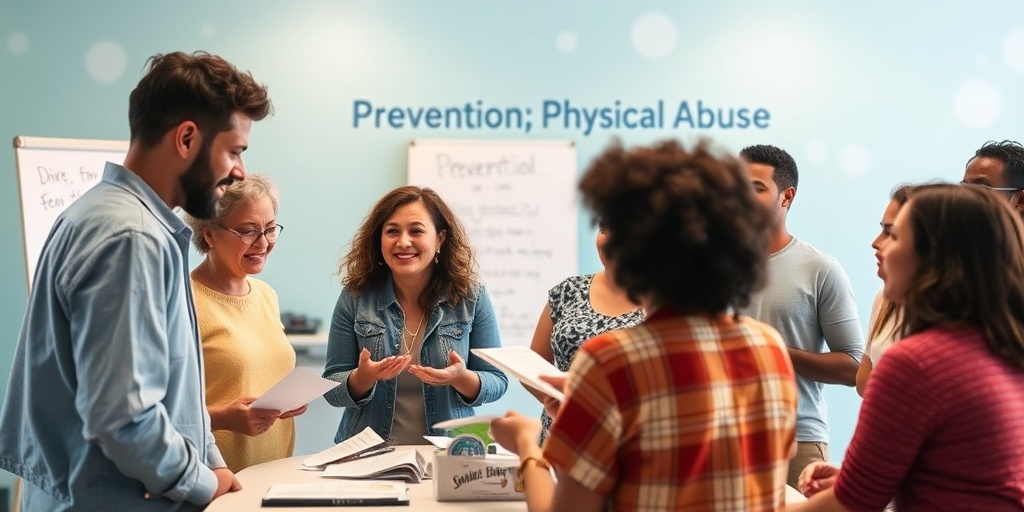
Frequently Asked Questions about Physical Abuse
What is Physical Abuse?
Physical abuse refers to any intentional act causing injury or trauma to another person through physical force. This can include hitting, slapping, punching, or any other form of violence that inflicts harm.
What are the Signs of Physical Abuse?
Recognizing the signs of physical abuse is crucial for early intervention. Common indicators include:
- Unexplained injuries or bruises
- Frequent absences from work or school
- Changes in behavior or withdrawal from social activities
- Fear of certain individuals or situations
How Can I Identify Physical Abuse in a Relationship?
In a relationship, physical abuse may manifest as:
- Physical violence during arguments
- Controlling behavior or intimidation
- Isolation from friends and family
- Threats of harm to oneself or others
What Should I Do If I Am Experiencing Physical Abuse?
If you are experiencing physical abuse, it is important to seek help. Consider the following steps:
- Reach out to trusted friends or family members for support.
- Contact local authorities or a helpline for immediate assistance.
- Document any incidents of abuse for legal purposes.
- Seek professional counseling or therapy to cope with the trauma.
Are There Laws Against Physical Abuse?
Yes, there are laws in place to protect individuals from physical abuse. These laws vary by location but generally include provisions for restraining orders, criminal charges against abusers, and support services for victims.
What Are Some Examples of Physical Abuse?
Examples of physical abuse include:
- Hitting, kicking, or punching
- Using weapons to threaten or harm
- Choking or strangling
- Forcing someone to engage in unwanted physical contact
How Does Physical Abuse Affect Mental Health?
Experiencing physical abuse can lead to severe mental health issues, including:
- Post-Traumatic Stress Disorder (PTSD)
- Depression and anxiety
- Low self-esteem and feelings of worthlessness
- Difficulty in forming healthy relationships
Can Physical Abuse Occur Without Physical Contact?
Yes, physical abuse can also include threats of violence or intimidation that create a sense of fear, even if no physical contact occurs. This is often referred to as emotional or psychological abuse.
Where Can I Find Support for Physical Abuse?
Support for victims of physical abuse can be found through various resources, including:
- Local shelters and crisis centers
- Hotlines dedicated to domestic violence
- Therapists specializing in trauma recovery
- Support groups for survivors
Is There a Difference Between Physical Abuse and Domestic Violence?
While physical abuse is a form of violence, domestic violence encompasses a broader range of abusive behaviors, including emotional, psychological, and financial abuse, typically occurring within a domestic setting.
How Can I Help Someone Who is Experiencing Physical Abuse?
If you know someone who may be experiencing physical abuse, you can help by:
- Listening without judgment and offering emotional support.
- Encouraging them to seek professional help.
- Providing resources and information about local services.
- Respecting their decisions and autonomy.
Remember, physical abuse is a serious issue, and seeking help is a vital step towards healing and recovery. 🌟

